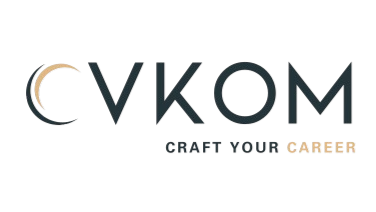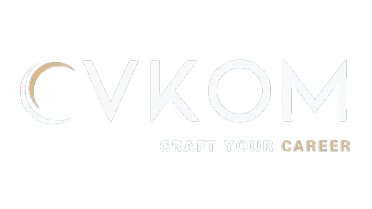This guide highlights the importance of including publications and research on your resume to showcase your expertise and credibility. It offers best practices and examples for structuring a dedicated publications section and research section on your resume.
How to
List Publications and Research on Your Resume: A Detailed Guide
Including publications and research
on your resume is a great way to demonstrate your expertise, analytical
abilities, and contributions to your field. Whether you’re applying for academic,
research, or industry positions, effectively showcasing your work can set you
apart from other candidates. This guide will walk you through the best
practices for listing publications and research on your resume in a
professional, organized, and impactful manner.
Why
Include Publications and Research on Your Resume?
- Showcases Expertise:
Publications highlight your knowledge and skills in a specific area.
- Demonstrates Credibility: Research accomplishments establish your authority and dedication to advancing your field.
- Enhances Academic Applications: If you’re pursuing a role in academia, research
assistantships, or graduate school, including publications is essential.
- Builds a Professional Reputation: Industry professionals value candidates who contribute
to the body of knowledge in their discipline.
Best
Practices for Listing Publications and Research
1.
Create a Dedicated Section
2.
Use an Appropriate Format
Follow the citation style relevant
to your field, such as APA, MLA, or Chicago. Ensure consistency throughout.
Example:
- Doe, J., & Smith, A. (2023). The Role of Machine
Learning in Climate Modeling. Journal of Environmental Science, 58(4),
456-470.
3.
Include Relevant Details
For each publication or research project, provide:
- Title:
Use italics or quotation marks for clarity.
- Authors:
Include your name in bold if you’re one of the authors.
- Publication Outlet:
Mention the journal, book, or conference.
- Year of Publication:
Ensure this is accurate.
- DOI or URL:
Add links if applicable and permitted.
Structuring
Research and Publications
1.
Publications Section Example
Publications
- Doe, J., & Brown, T. (2022). Innovative Energy Solutions for Sustainable
Growth. Renewable Energy Journal, 34(2), 112-120.
- Doe, J.
(2020). Data Analytics in Healthcare: A Case Study. Proceedings of
the International Conference on Data Science, New York, NY.
2.
Research Section Example
If your research has not been
published but is still significant, create a section titled “Research” or
“Research Projects.”
Research Projects
- Project Title:
“AI-Based Solutions for Predictive Maintenance in Manufacturing”
Role: Lead Researcher
Description: Conducted predictive modeling using Python and TensorFlow, resulting in a 30% reduction in machine downtime.
Institution: University of XYZ, 2022. - Project Title:
“Genetic Markers in Cancer Diagnostics”
Role: Research Assistant
Description: Collaborated with a multidisciplinary team to analyze 200+ genomic datasets, leading to a peer-reviewed publication.
Institution: ABC Research Institute, 2021.
Additional
Tips for Highlighting Publications and Research
1.
Prioritize Relevance
2.
Keep It Concise
For roles where publications aren’t
the primary focus, limit the list to a few of your most impactful works.
3.
Highlight Collaboration
Emphasize teamwork in research,
especially if applying for roles requiring collaboration or cross-disciplinary
work.
4.
Showcase Ongoing Research
If you have research in progress, label it as “Under Review” or “Work in Progress.”
Example:
- Doe, J.
(Under Review). Blockchain Applications in Supply Chain Management.
Submitted to the International Journal of Logistics.
5.
Provide Context in Your Cover Letter
Elaborate on significant research
achievements in your cover letter to give hiring managers a deeper
understanding of your contributions.
Example
Resume Section
Header
Jane Doe
Email: jane.doe@email.com
| Phone: +1-555-123-4567 | LinkedIn: linkedin.com/in/janedoe
Summary
"Experienced researcher with a
strong background in data science and environmental sustainability. Published
author in peer-reviewed journals, with expertise in machine learning
applications for climate modeling and renewable energy solutions."
Experience
Research Fellow
XYZ University | Jan 2021 – Present
- Conducted climate modeling research funded by a
$500,000 government grant, resulting in a published article in a top-tier
journal.
- Designed machine learning algorithms to predict climate
changes, increasing model accuracy by 20%.
Data Analyst Intern
ABC Analytics | June 2020 – Dec 2020
- Developed predictive models using Python and R to
optimize resource allocation in renewable energy projects.
Publications
- Doe, J., & Green, S. (2023). Advancements in Renewable Energy Analytics.
Energy and Environment Journal, 45(3), 215-228.
- Doe, J.
(2021). AI in Predictive Climate Modeling. Proceedings of the
Global Data Science Conference, Tokyo, Japan.
Education
Master of Science in Environmental
Science
University of XYZ | Graduated May 2022
Skills
- Research Methodology
- Data Analytics (Python, R, MATLAB)
- Academic Writing and Peer Review
Why
Choose CVKOM for Your Resume?
At CVKOM, we understand the
nuances of crafting resumes that effectively showcase publications and
research. Our platform offers:
- Customizable Templates: Tailored for academic, research, and industry roles.
- AI-Powered Assistance: Optimize your resume with precise formatting and
keyword inclusion.
- Proofreading Tools:
Ensure clarity and professionalism in every detail.
- ATS Optimization:
Increase your chances of being shortlisted by automated systems.
Conclusion
Listing publications and research on
your resume requires precision, clarity, and relevance. Whether you’re
targeting academic positions or industry roles, showcasing your intellectual
contributions can give you a competitive edge. Let CVKOM help you
present your research accomplishments in a professional and impactful way.
Start building your
publication-focused resume today with CVKOM—where expertise meets
opportunity!




